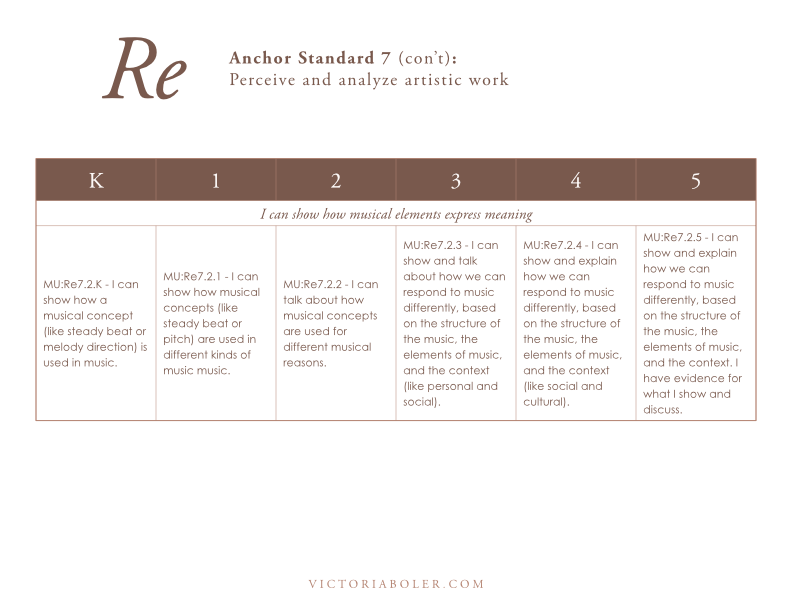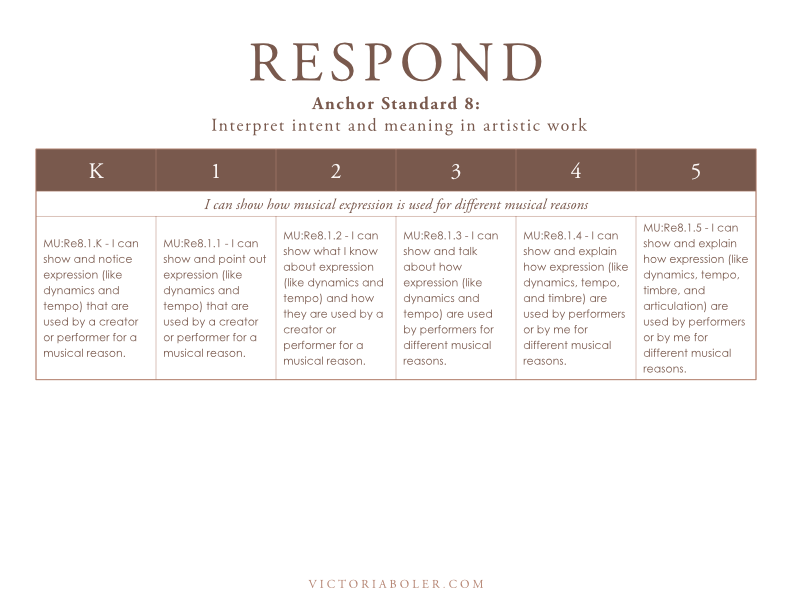National Core Arts Music Standards Written as "I Can" Statements
In many situations, elementary general music teachers are required to tie their lessons back to the National Core Arts Standards or local standards for music education. In the case of local standards, these have most often developed in reference to the National Core Arts standards.
For some of us, aligning our active music experiences to the National Standards can feel tricky. This may feel like one of the highest priorities for our administrators to see in our lesson plans. Yet, it might be an area that was overlooked in teacher training courses.
Today we’ll look at the National Standards for Music Education. We’ll talk about what they are. We’ll talk about what they aren’t. And we’ll talk about translating them into student-voice “I Can” statements.
Download the 20-page printable PDF with all standards at the bottom of this post.
Here we go!
What Are the National Music Standards?
The National Core Arts Standards (NCAS) outline four artistic processes that all Artists engage in.
These four musical processes are Performing, Responding, Creating, and Connecting.
In other disciplines, Performing is called presenting for visual arts, or producing for media arts.
Artistic Roles: Doer, Thinker, Inventor
We might think of these processes - performer, responder, creator, and connector - as the different hats we wear as musicians.
Musicians might take on several different roles relating to music, depending on their experience and the setting. A guitar player on stage in front of an audience will take on a different musical role than the person who programmed the lights for the show to match the key musical moments. The person who programmed the lights has a different role than the song-writer who created the song.
Each of these people is engaged in the music, though only one of them is on stage. These three roles illustrate the three artistic processes outlined in the Standards. I think of these three roles as the musical doer, thinker, and inventor.
Performer (Doer)
A musical performer is a doer. They actualize music by carefully selecting songs or pieces, interpreting a score, making thoughtful performance decisions, working to improve their performance, and tailoring their presentation for their audience.
Responder (Thinker)
A responder is a thinker. A responder considers things like what gives music its meaning, what musical expressions lead us to feel certain ways, and how we might evaluate music based on the context.
Creator (Inventor)
A creator is an inventor. A creator spends their time imagining ideas, finding a way to preserve them, and reworking them again and again until their final product is complete.
Connector (All three)
In the connecting processes, an artist shows how music is connected to other experiences, contexts, and subjects.
Connecting is the artistic process that at first glance may seem to be overlooked. However, the authors of the standards point out that the process of connecting is embedded in each of the other roles.
To use our example earlier, the guitar player considers the performance venue and context in their presentation of the song. The person programming the lighting synthesizes their technical training with lights and their musical thinking to create the lighting map. The songwriter would have a backstory about how and why the song was written, and perhaps a personal experience or story they heard that shaped the final song.
Each process includes opportunities to show how music is interconnected with many other areas.
“I can theorize” vs “I can do”
One of the challenges music teachers can face is how to apply the standards to an active music room.
Nowhere in the standards are the words, “sing” or “speak” used. Movements and instruments are only mentioned once in preschool and kindergarten as media students can use to create ideas.
Instead of words like sing, speak, play, or move, the standards are full of words like “discuss” “consider” “state” “demonstrate” “describe” and “explain.”
Why might that be?
For many music teachers, this can strike us as odd - why do the music standards seem to lack active music-making language?
The reason is that the standards are not intended or designed to primarily focus on musical performance skills. That is not the purpose of these standards. This is a distinction between musical skills and musical literacy.
Expanding Notational Literacy
Literacy is a term we often use in its connection to notational literacy. The goal of notational literacy is for students to read and write.
However, the authors of the standards are using it to describe literacy beyond notation. They define artistic literacy as:
knowledge and understanding required to participate authentically in the arts
Music literacy is defined as:
knowledge and understanding required to participate authentically in the discipline of music by independently carrying out the artistic processes of creating, performing, and responding
This is a much more broad way of thinking about literacy.
The Arts standards are unique from other subjects in that they show the transferable understandings between artistic disciplines: music, visual arts, dance, theater, and media arts.
In the Classroom: Breaking it Down
Because the standards are not designed to be actionable skills, there may be some interpretive steps necessary when they are applied to an active music room.
Here’s one example for 1st Grade, working on the concept of fast and slow.
Standard:
MU:Re7.2.1 - With guidance, demonstrate awareness of expressive qualities (such as dynamics and tempo) that reflect creators’/performers’ expressive intent.
Standard “I Can” Statement:
I can show how different musical elements express musical meaning
Activity:
(This activity is from The Planning Binder 2021 - 2022 curriculum)
Students speak the rhyme, Bee Bee Bumblebee with a fast or slow tempo, depending on what the bee is doing.
Pretend that the bee is in a hurry to get home because it’s family game night! (Speak the rhyme with a fast tempo)
Now pretend the bee wants to fly home slowly because he knows he has to do his chores. (Speak the rhyme with a slow tempo)
The teacher asks what other reasons the bee might move fast or slow.
Students share ideas and the class speaks with an appropriate tempo.
Lesson “I Can” Statements:
I can play fast and slow
I can play fast and slow for different reasons
The lesson activities point to the standards, but the standards are not the activity in and of themselves.
“I Can” Statements for the National Music Standards
You can download the “I Can” Statements document with the link at the bottom of this post.
Big Idea Pages
The first page of the document shows the big picture overview of the artistic process. It includes the anchor standards and a “too long; didn’t read” version of the grade-level performance standards.
This is our zoomed out, standard-at-a-glance resource.

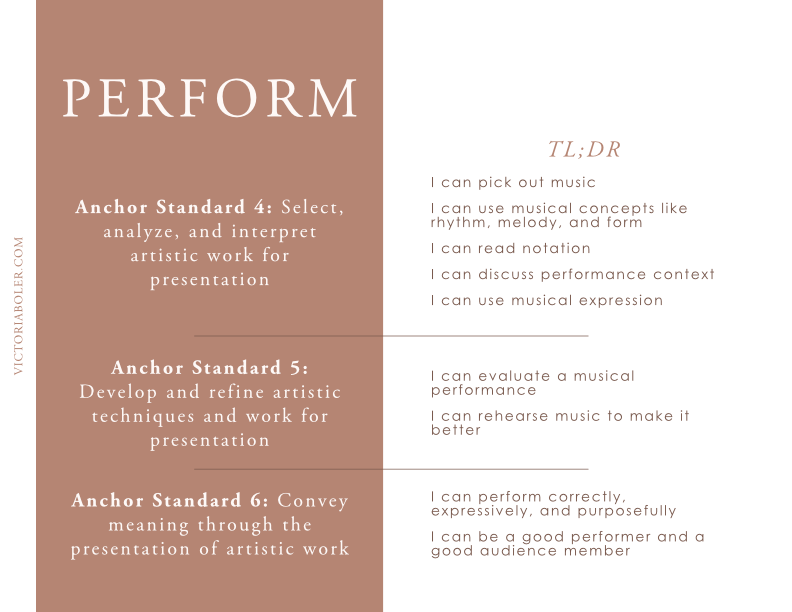

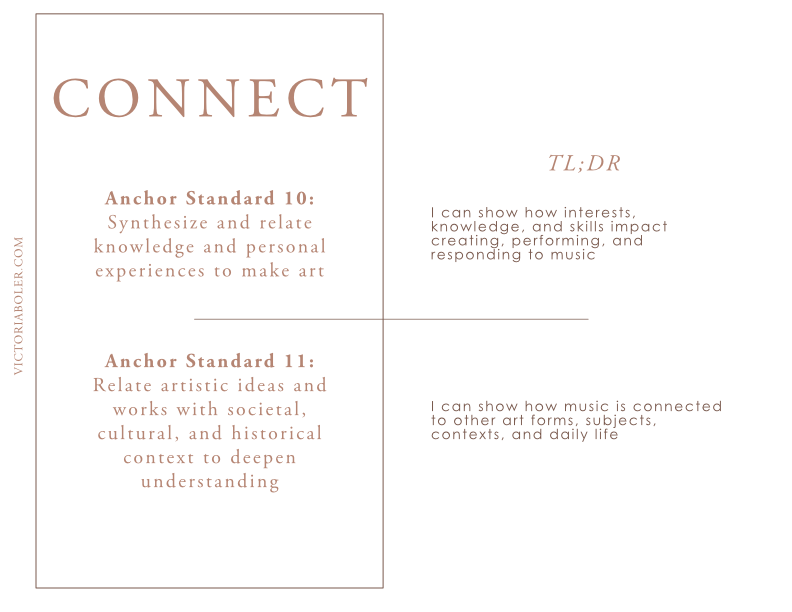
Grade-Level Details
These anchor standards are broken down in to more detailed descriptions (performance standards) by grade-level. The performance standards can get a little wordy, so I’ve gone through each individual descriptor and translated it into an “I Can” statement as well. The “TL:DR” (“too long; didn’t read”) headings are included for each standard.
Let’s look at each process of the standards and break them down.
Performing

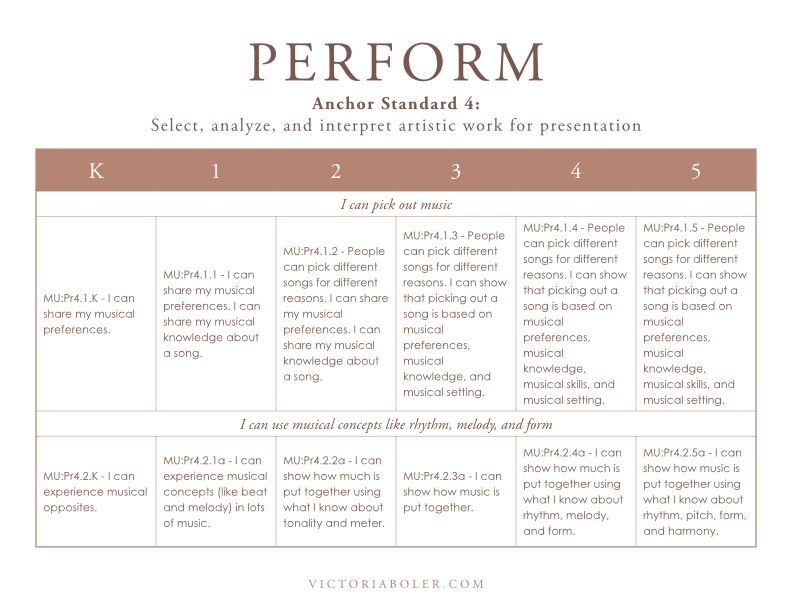
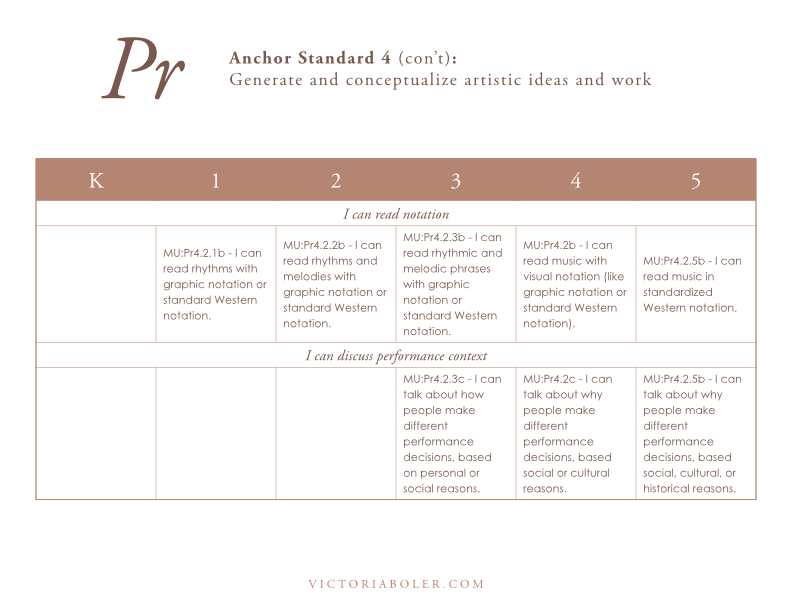
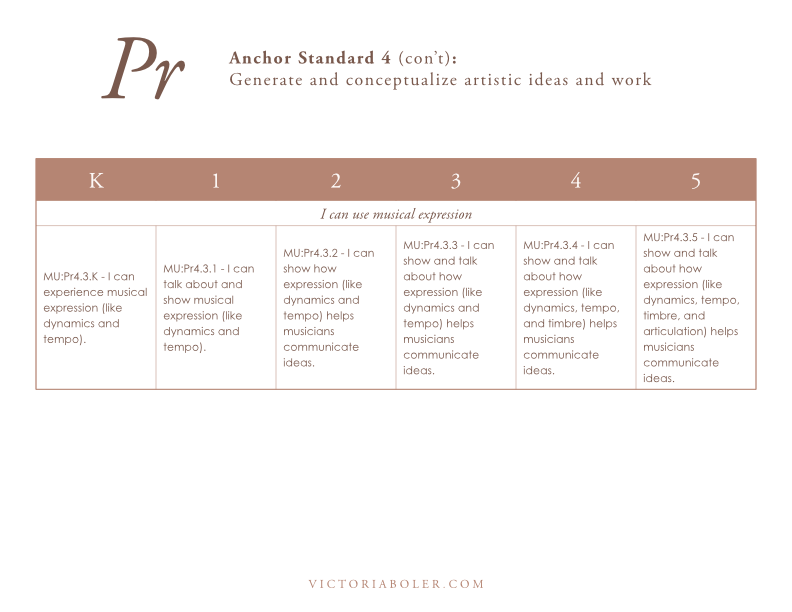
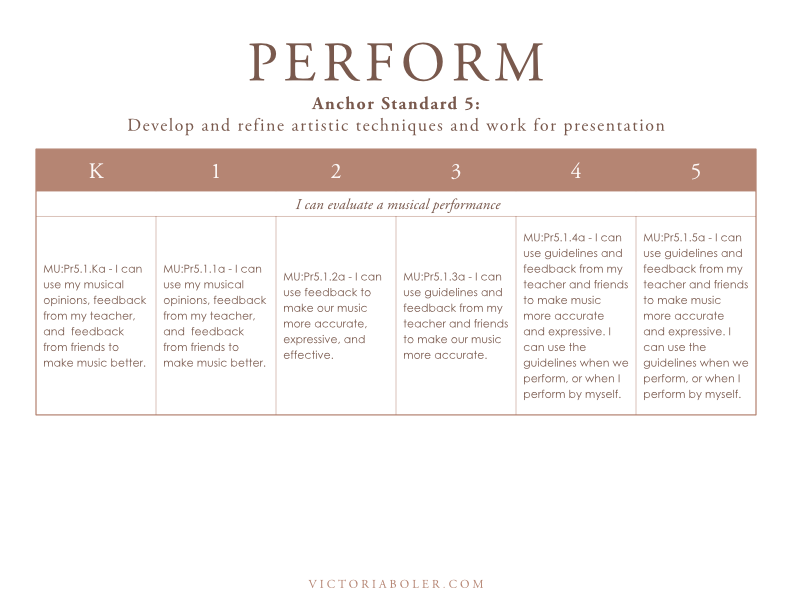
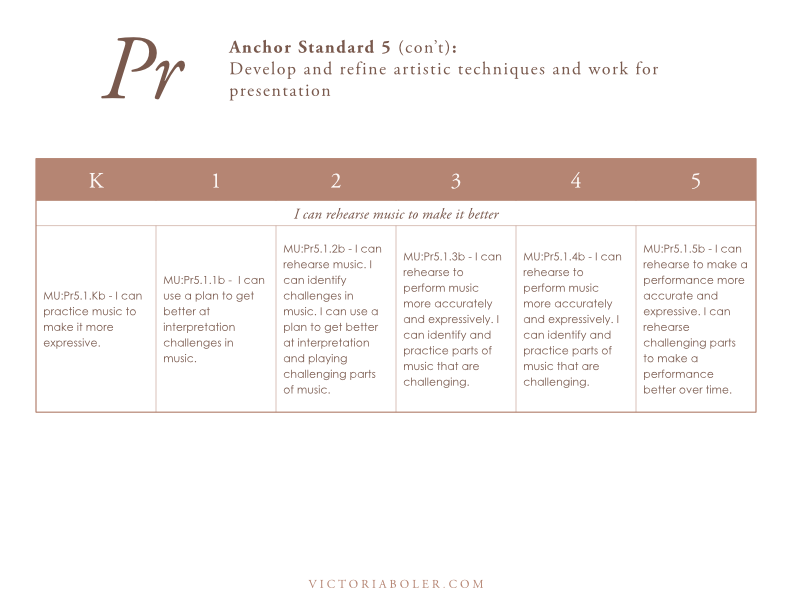
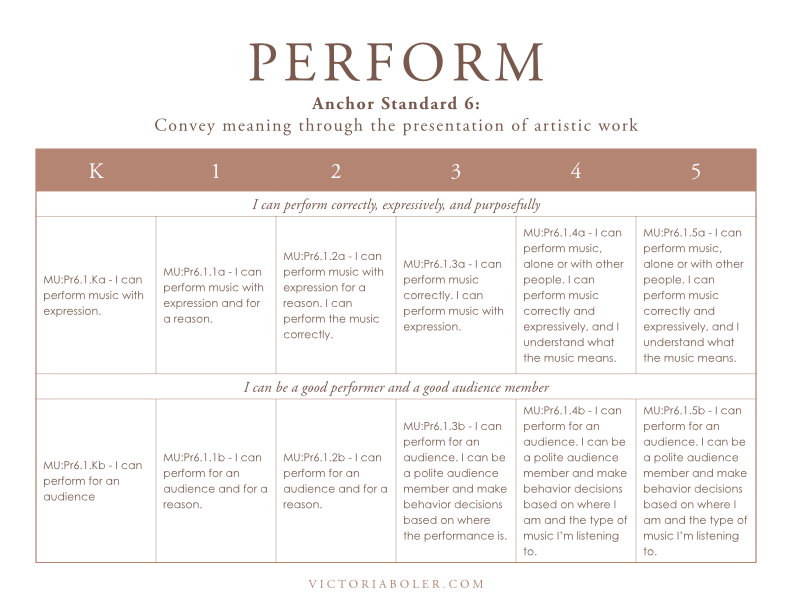
The performing strand has three anchor standards that outline the role of the performer, or the doer in music.
Something interesting to note is that the performance strand has the most performance descriptors of the four artistic processes. The anchor standards are broken down into nine performance standards.
Responding
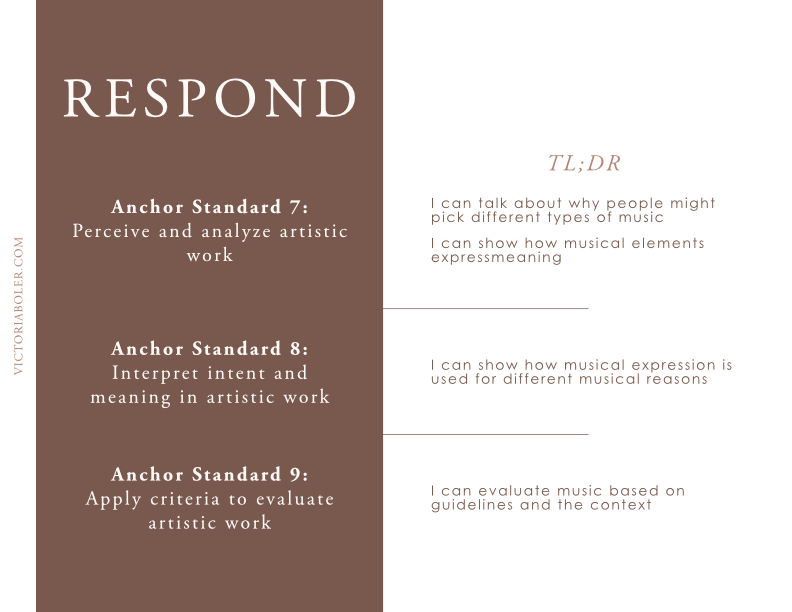
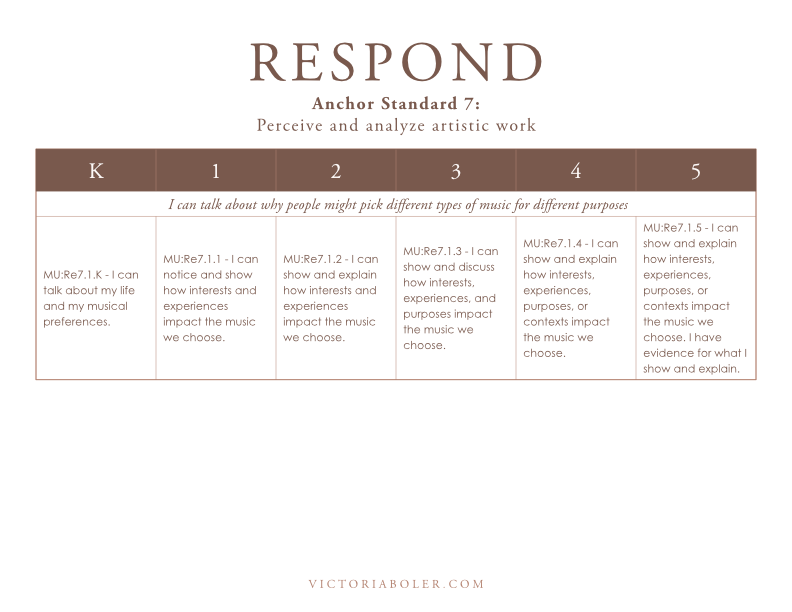


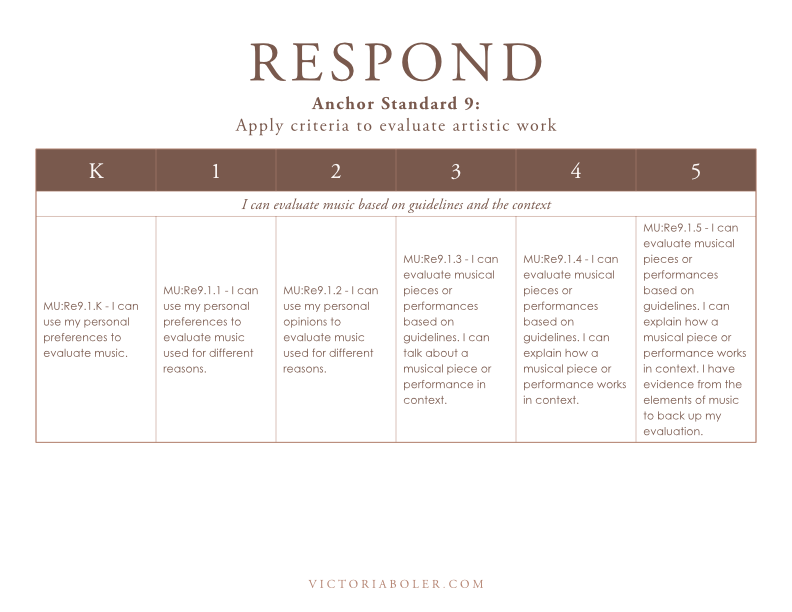
The responding strand has three anchor standards as well.
Those anchor standards are broken down into four performance standards.
Creating
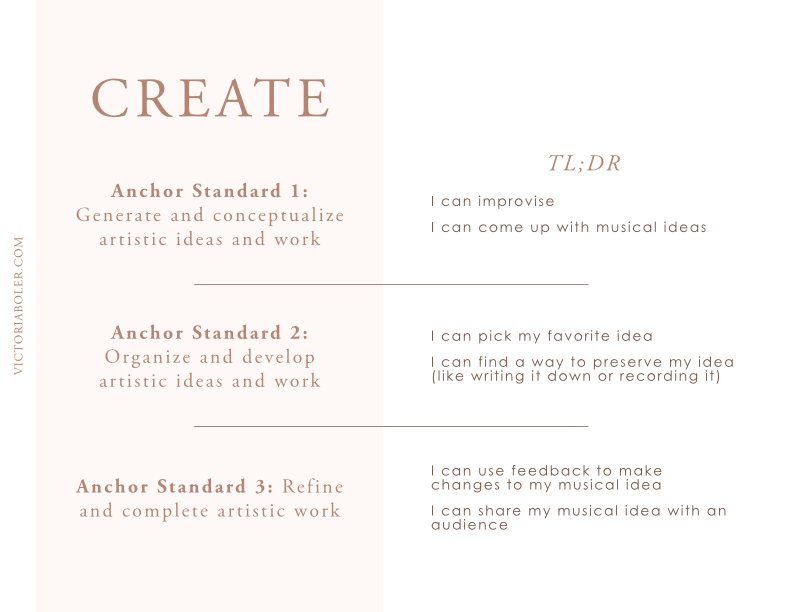
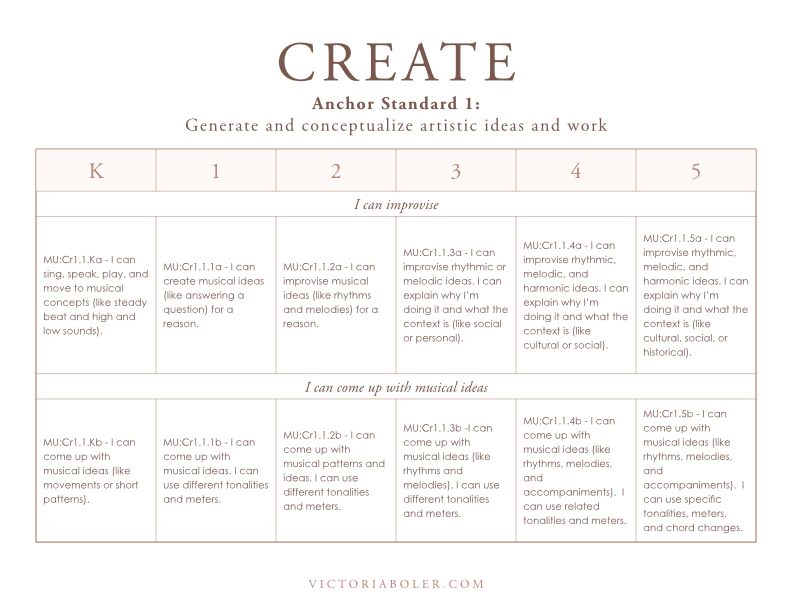
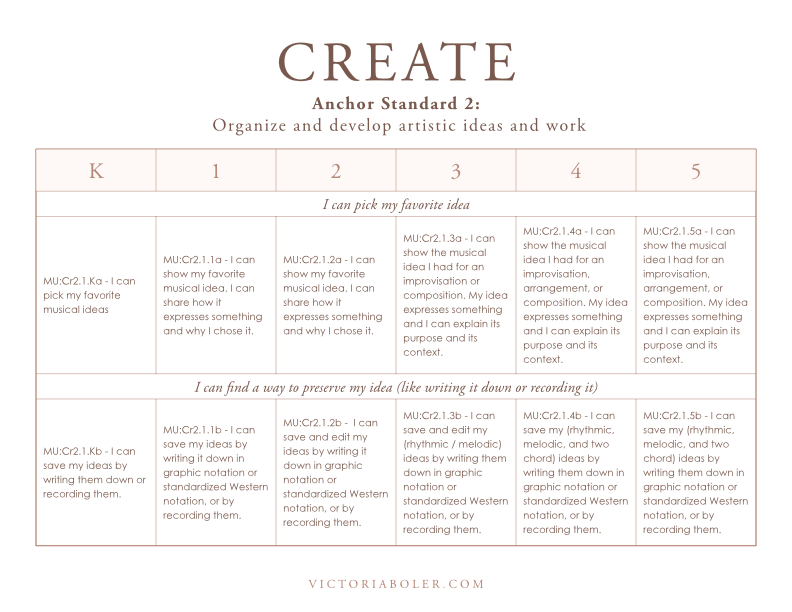
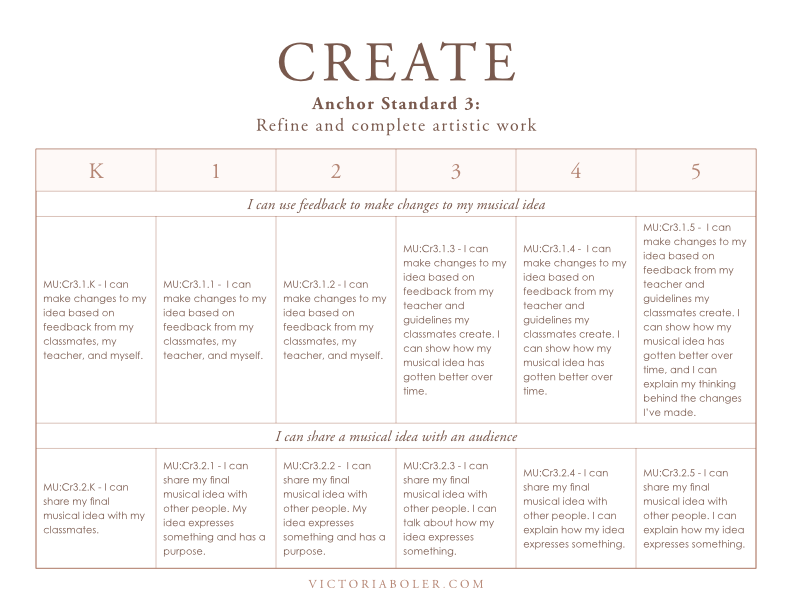
The creating process uses three anchor standards.
These anchor standards are broken down into six performance standards.
Connecting

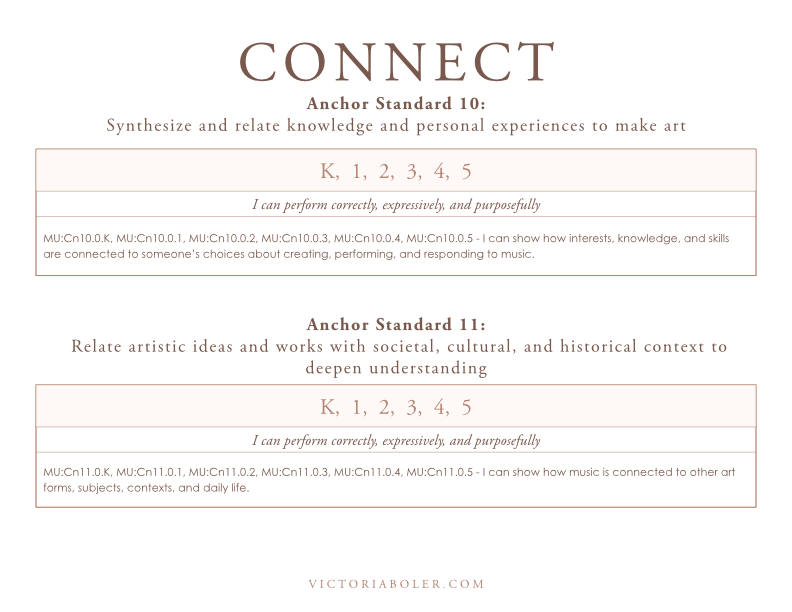
The document for Connecting is structured a bit differently from the others since connecting is included in the other artistic processes.
There are two anchor standards and two performance standards. Unlike the other processes, these performance standards apply to all grade-levels.
What the standards are and are not
The standards are not the curriculum.
The standards are not an actionable set of musical skills.
The standards are not music pedagogy.
The standards are outlines of artistic processes.
The standards are pathways toward music literacy.
The standards give us a framework of transferrable understandings that can apply across the Arts. They are designed to guide us in creating lifelong, literate musicians who engage in music through the processes of performing, responding, creating, and connecting. The way we apply the standards will look different from classroom to classroom, and that flexibility is what makes them so valuable.
When we break down these standards into “I can” statements in students’ voices, we essentialize the information and bring the wording into our vernacular.
This is a practice that will undoubtedly benefit students. But the process of shifting through each individual standard in this way may benefit us as teachers even more.












